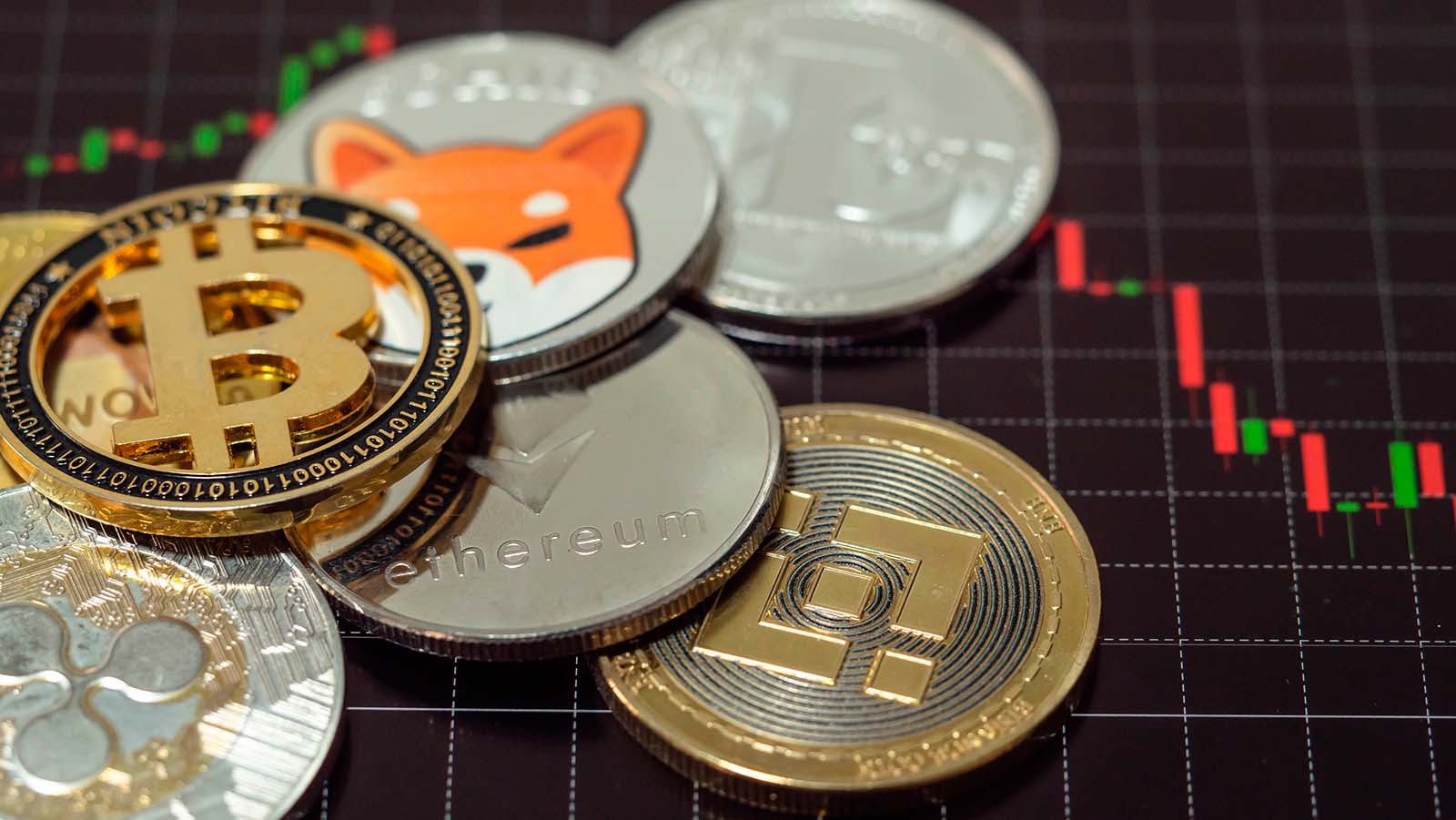

Cryptocurrencies, a highly volatile asset
If there is one thing that characterises the cryptocurrency market, it is its high volatility. As it is a relatively small market in which a large part of the cryptocurrencies are concentrated in a few hands, speculation by large investors tends to generate large fluctuations due to their pulling power and the intangible value of cryptoassets.
The financial crisis of 2007-2008 led Satoshi Nakamoto to create a cryptocurrency that would escape the traditional financial system: bitcoin. In the first transaction, which took place at the beginning of 2009, its value was residual: only 0.00076 dollars.
Since then, the price of bitcoin has soared, albeit with enormous volatility. If we analyse its evolution over the last two years, we can see that it went from less than 10,000 euros in September 2020 to more than 50,000 half a year later, only to fall back below 30,000 four months later. And, after further rallies, which took it to a valuation in November 2021 of 58,358 euros, its historical maximum, the successive falls of the “crypto-winter” have placed it at around 20,000 today, practically a third of its higher value.
Bitcoin is no exception. Volatility is also affecting other cryptocurrencies. For example, ether lost two-thirds of its value between April and June, going from more than 3,000 euros to less than 1,000 euros, before rising back above 1,900 in mid-August and dropping below 1,400 from mid-September onwards.
Terra luna, the most notorious case, went from being worth more than 80 euros at the beginning of May to being practically worthless in little more than a week. And yet it was a ‘stablecoin’, i.e. a cryptocurrency whose value is linked to that of another currency, commodity or financial instrument, which should provide more stability.
Little tangible value
Cryptocurrencies have gained a lot of prominence in the financial world in recent years. A report by the Bank of Spain estimates that the cryptoassets market reached a capitalisation of $2.8 trillion in 2021, approximately 1 % of global financial assets.
Even so, they still lack the acceptance of traditional assets such as equities or gold. Economists such as Paul Krugman and business leaders such as Warren Buffett have even described them as a “mirage” and have even predicted their demise.
It is true that the gold or equity markets are no strangers to speculation either, but gold or listed companies have a more obvious intrinsic value. Gold has long been used as a medium of exchange and is a reasonably stable commodity in terms of price, demand and supply. Listed companies, on the other hand, have properties, customers, cash flows and income statements that give them a more tangible value.
While no one can deny that blockchain provides benefits such as security, decentralisation, cost reduction and speed, it is still tricky to specify the real value that cryptocurrencies bring to their owners. And that is fertile ground for volatility.
A poorly regulated market
Nor does the lack of a governing or controlling body, as is the case with fiat currency, shares or bonds, help stability. In this sense, progressively increasing regulation could contribute to greater adoption, although over-regulation could be counterproductive.
Hence, the European Union has published a proposal for a regulation affecting cryptoasset issuers, exchange platforms and digital currency wallets. This regulation aims to facilitate the supervision of the sector and prevent market manipulation.
The power of the whales
Without a clear real value, cryptocurrencies are highly speculative assets, so they are much more sensitive to one-off movements by large investors, which trigger chain reactions up or down.
It should be borne in mind that the cryptocurrency market is still very small compared to other assets and that a considerable part of it is in the hands of a few investors, known as “whales”. Per Wimmer, founder of Wimmer Financial LLP, has even warned that the cryptocurrency market is dominated by ten whales.
This may be an exaggeration, but the truth is that, according to the US National Bureau of Economic Research, by the end of 2020 a third of all bitcoins were in the hands of just 10,000 investors. This concentration means that their decisions can more easily destabilise the market, as their relative weight is much greater.
Speculative manoeuvres
In order to get rich, some whales start selling a large volume of cryptocurrencies at below-market prices. This triggers panic and sales by small investors skyrocket. Once the price bottoms out, the whales take the opportunity to buy back more cryptocurrencies.
Massive adoption of cryptocurrencies, which would reduce the relative weight of large investors, would therefore help to stabilise the market. This would require them to be on a par with fiat currencies so that they are perceived as a stable value and can be more easily exchanged for goods and services. Utility is a key element in establishing the value of an asset, and the potential of cryptocurrencies is still being explored.
Media noise
The subjective value of cryptocurrencies also makes them very sensitive to media noise. For example, when Tesla announced that cryptocurrencies would not be accepted as a means of payment, the value of bitcoin plummeted, while Elon Musk’s support for dogecoin on Twitter was enough to send the value of this cryptocurrency soaring.
If the news around a cryptocurrency is positive or an influencer generates positive sentiment towards it, demand and price increase. The opposite happens when the news or sentiment is negative.
It is still too early to tell whether markets will stabilise in the future and cryptocurrencies will be able to be traded like fiat currencies. What is clear is that the amount of capital invested in cryptocurrencies would have to grow a lot for volatility to be reduced.
If you want to discover the best option to protect your savings, enter Preciosos 11Onze. We will help you buy at the best price the safe-haven asset par excellence: physical gold.
Leave a Reply
You must be logged in to post a comment.





Gràcies!
Gràcies a tu, Joan, per ser-hi i per seguir-nos!!!
Interessant informació sembla que no estar dins del que es el sistema oficial i institucional te el seu preu
Sí, cert, això sembla… Moltes gràcies pel teu comentari, Alícia!!!
Gràcies.
Gràcies a tu, Pere!!!
Gràcies per la informació👌
A disposar Jordi, per això estem.
Molt bon article👍
Si Manuel, compartim!